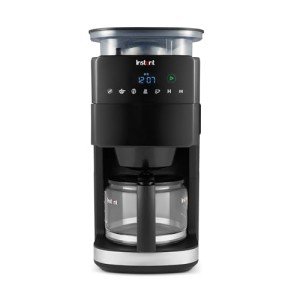Guide To Vintage Espresso Machine: The Intermediate Guide For Vintage …
페이지 정보

본문
The Charm of Vintage Espresso Machines: A Journey Through Time
Worldwide of coffee enthusiasts, few products evoke fond memories and adoration like vintage espresso machines. These perfectly crafted devices not just brew exceptional coffee but likewise act as pieces of art that tell stories of bygone eras. This blog post checks out the appeal of vintage espresso machines, their history, essential features to consider when purchasing one, and insightful tips for maintaining these classic treasures.
A Historical Overview
The history of Espresso Brewer machines is rich and differed, showing wider shifts in coffee culture and innovation. Below is a timeline highlighting the evolution of espresso machines through the years:

| Year | Advancement |
|---|---|
| 1901 | The first espresso machine, the "Il Martelli," is developed by Luigi Bezzera in Italy. |
| 1905 | Desiderio Pavoni patents an improved variation, paving the method for commercial espresso machines. |
| 1947 | The Faema E61 is presented, featuring a revolutionary style that uses an integrated pump and boiler. |
| 1950s | The development of home espresso machines starts, popularized by brands like Gaggia and La Pavoni. |
| 1970s | The specialized coffee motion begins, further improving the espresso machine's appeal. |
| 1990s | Technological improvements lead to the development of super-Automatic Espresso Machine With Grinder machines, though vintage models continue to be highly demanded. |
These turning points mark significant advancements and changes in the espresso machine's design, functionality, and role in coffee culture.
Why Collect Vintage Espresso Machines?
Vintage Portable Espresso Maker machines are more than simply practical gadgets; they are symbols of workmanship, nostalgia, and the enduring love for coffee. Here are numerous factors why collectors and baristas alike are drawn to these machines:
1. Workmanship
Numerous vintage designs were handcrafted with a level of accuracy and quality that is hard to discover in modern mass-produced machines. Their strong build and distinct designs make them standout pieces.
2. Aesthetic Appeal
From the classy curves of chrome accents to the warmth of wooden manages, vintage espresso machines often show stunning aesthetic appeals that can elevate any kitchen area or coffee shop design.
3. Distinct Brewing Experience
Older machines typically deliver a various flavor profile than modern machines due to different developing techniques, which can interest home baristas searching for an unique taste.
4. Historic Significance
Owning a vintage espresso machine connects the contemporary coffee enthusiast to a rich heritage of coffee culture, using a concrete connection to the history of coffee-making.
Key Features to Consider
When delving into the world of vintage espresso machines, it's essential to keep numerous functions in mind to ensure you're making an informed purchase. Here are some crucial aspects to consider:
1. Develop Quality
Try to find machines with a robust stainless-steel or brass body. Ensure that components, such as the portafilter and steam wand, are undamaged and functional.
2. Boiler System
Think about whether the machine has a single or double boiler system. Double boilers enable for simultaneous developing and steaming, providing greater performance.
3. Pump Type
Vintage machines might have either a lever or an electric pump. Lever machines require Manual Espresso Machine operation and can be a gratifying difficulty for experienced baristas.
4. Parts Availability
Examine if extra parts are readily offered. Machines from popular brands might have better assistance in terms of repair and maintenance.
5. Looks
Select a machine that resonates with your individual style-- whether that be streamlined metal finishes or intricate detailing.
Tips for Maintaining Vintage Espresso Machines
Correct care is important to keep vintage Super-Automatic Espresso Machine machines operational and looking their best. Here are useful maintenance suggestions:
Regular Cleaning: Clean the portafilter, group head, and steam wand after every usage to maintain taste quality and machine performance.
Descaling: Descale the machine every 3-6 months utilizing an appropriate descaling representative to prevent mineral build-up that impacts efficiency.
Check Seals and Gaskets: Regularly examine gaskets and seals for wear. Changing these small parts can significantly improve the machine's function.
Professional Servicing: Consider taking your machine for professional maintenance every couple of years to address any technical problems.
Storage: If not utilized frequently, keep the machine in a dry, cool place to avoid damage from humidity and temperature level fluctuations.
Often Asked Questions (FAQs)
Q1: How much does a vintage espresso machine cost?
A1: Vintage espresso machines can range from ₤ 100 to several thousand dollars, depending on the brand, model, rarity, and condition.
Q2: Can I utilize a vintage machine for day-to-day developing?
A2: Yes, vintage machines can be used daily, however they might require more upkeep than modern machines. It's recommended to acquaint yourself with the particular design's requirements.
Q3: Are vintage espresso machines worth the investment?
A3: Many coffee lovers find value in vintage machines for their visual appeal, distinctive brewing qualities, and historic significance. They can also appreciate in worth in time.
Q4: Where can I buy vintage espresso machines?
A4: Vintage espresso machines can be discovered at coffee boutique, estate sales, antique stores, and online marketplaces such as eBay or specialized vintage coffee devices websites.
Q5: Can I fix a vintage espresso machine myself?
A5: Some repairs can be DIY, specifically for small issues. However, more complex repair work may need the know-how of a professional technician acquainted with vintage machines.
Vintage espresso machines are more than mere kitchen area devices; they represent an abundant marriage of art, history, and coffee culture. Understanding their origins, features, and upkeep can enhance the experience of owning one of these lovely machines. Whether you are a collector, a home barista, or merely someone passionate about coffee, purchasing a vintage espresso machine may simply be the ideal way to delight in coffee through the lens of history.
- 이전글Interesting u31 Gamings at Leading Thailand Gambling Enterprise 25.11.06
- 다음글Review: Grand Theft Auto V (PS4) 25.11.06
댓글목록
등록된 댓글이 없습니다.
